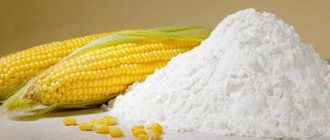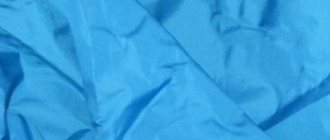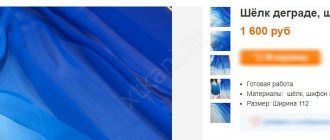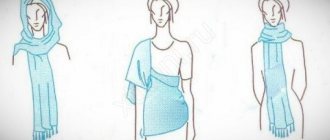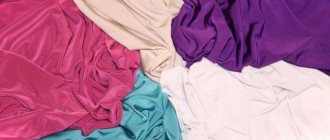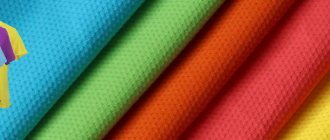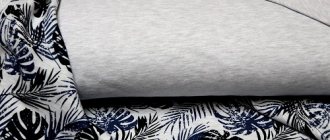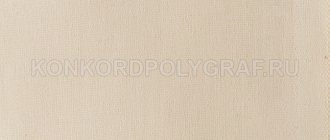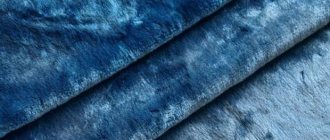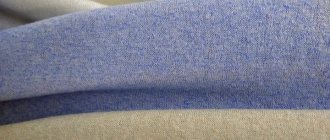The modern textile industry produces many materials with the most unusual names and unique properties. One of them is memory fabric, which contains fibers that allow matter to remember and restore its original shape.
The smooth, pleasant-to-touch surface of the material has a noble matte shine. Memory clothing does not stretch, fits the figure perfectly, any fold on it can be straightened out without an iron with a simple stroking movement of the palm.
Description
The description of cotton memory fabric will be approximately as follows - a pleasant, smooth-to-touch material with a slight matte sheen on the surface. In addition, the matter is quite dense. For those who are interested in whether memory cotton fabric stretches or not, we inform you that the material is not elastic, but this does not prevent it from fitting perfectly to the figure.
“Smart” matter was invented not so long ago, in 2003. The authors of cotton memory fabric (which means “cotton” and “memory” in English) are Japanese, but the market now mainly offers fabrics made in China and Korea.
Cotton memory material is one of the varieties of “memory”, in contrast to the classic version, consisting entirely of synthetics, cotton is present in the composition, which increases the environmental friendliness of the fabric, its hygroscopicity and breathability. The description of the classic “memory” made of polyester will be slightly different. However, the cotton content should not be more than 30%, otherwise the material will lose its “smart” properties.
You can see what memory cotton fabric and products made from it look like in the photo.
Price – from 250 rubles.
Rules of care
In order for clothing made from memory to be worn for a long time and always delight you with its impeccable appearance, you must follow simple rules for caring for products made from this unusual fabric.
You can wash items made from memory either manually or in a washing machine at a water temperature of no more than 40°C. For washing, it is better to choose mild liquid detergents, without bleach, chlorine and other active chemicals.
When spinning clothes, you should not use a machine drum or twist the item by hand. This procedure can damage the fiber structure and significantly shorten the life of the products. It is better to let the water drain spontaneously and then lay the clothes out to dry on a flat surface.
Properly dried items usually do not need ironing. If necessary, you can iron memory products with a not very hot iron in the “synthetic” mode.
Properties
You can distinguish high-quality material this way: if you squeeze it, numerous creases and folds will remain on the surface. But as soon as you run your hand over them, cotton memory returns to its original state. Let's look at the photos before and after creasing. In addition to rapid recovery after deformation, matter has a whole set of positive qualities:
- Excellent protection from wind
- High strength and wear resistance
- Resistance to mechanical damage
- Dirt-repellent properties
- Hygroscopicity and breathability - thanks to the cotton content
- Cotton memory does not accumulate static electricity
- Resistant to sunlight
- It does not fade or fade when washed
- If the material will be used for sewing outerwear, it is impregnated with a special solution that ensures moisture resistance
- Incredibly easy to care for
Let's compare and see
There are other synthetic and mixed fabrics that cannot boast of having “memory”, but are similar in other characteristics:
- Polysatin is a fabric with a “satin” fiber weave. During its production, double threads are twisted and processed, the fabric is dense, perfectly smooth, and shiny. The composition can be 100% polyester or mixed with cotton (35% - 50%). Except for the fact that polysatin is not able to remember the resulting shape, otherwise it is very similar to memory: durable, airtight if synthetic and breathable if mixed. This is an unpretentious fabric from which both clothing and bed linen, curtains, tablecloths, bags, covers, etc. are sewn. The lack of “memory” even in 100% polyester is explained by different production technologies. More information about the composition of polysatin fabric can be found at the link.
- Satin - pre-polished double fibers make the fabric dense, durable, and smooth. The fabric is pleasant to the body, with a silky shine. Satin is composed of 100% cotton; sometimes manufacturers add a small amount of synthetics, but it is too small to deteriorate the properties of the fabric. Satin is hypoallergenic, not subject to static stress, and looks great even after multiple washes. Satin is used mainly for bed linen and home clothes. You can learn about the density of satin fabric in this material.
Memory cotton differs from satin and polysatin only in its ability to return to its original shape, but pure polyester memory also differs in its scope of application.
Application
When talking about fabric, it is important not only to show what it is, but also to stipulate what can be sewn from it.
First of all, these are raincoats, jackets and other outerwear. In it, a person will feel as comfortable as possible in both rain and windy weather.
In addition, cotton memory makes very beautiful dresses, skirts, trousers, jackets and blazers; it is not for nothing that this material is considered a type of costume material.
What to sew from memory fabric?
The properties listed above indicate that memory material is an ideal solution for a variety of everyday clothing. Jackets, down jackets, raincoats, and windbreakers are made from shiny impregnated fabric, which are beautiful, practical, and reliably protect from bad weather. Matte material is well suited for suits, trousers, skirts, jackets, including children's ones.
Such things are very aesthetic, pleasant to wear, and require virtually no maintenance, and the use of mixed fabrics allows for good air exchange, sufficient hygroscopicity and thermoregulation.
Tempur material
What is TEMPUR?
TEMPUR is an open-cell, viscoelastic foam material that can distribute pressure and conform to your body's shape in response to your heat. Regular polyurethane may boast uneven beads of foam that simply shrink under weight. TEMPUR material has millions of open balls (with holes) that move with some deceleration around the curves of your body, offering absolute support where you need it, but without pressing back on your body. When you stand up, the TEMPUR material returns to its original state.
Unique formula
Real TEMPUR material is made only in-house using our secret formula known only to a few people. The manufacturing process is used exclusively to produce our products, which also include a wide range of accessories ideal for travel or for added cushioning support around the home.
Production
Features of growing raw materials:
- The family includes five dozen varieties, but only four are suitable for producing products suitable for further processing in the textile industry.
- High water consumption.
- There are cotton plantations in 76 countries.
- 25 million tons of soft contents of the boxes are collected per year.
- The largest volumes of raw materials are supplied from China, the USA and India.
- 40% of all fabrics produced today contain cotton.
Our products
TEMPUR is a unique thermoactive material that follows the contour of your body. Soft where you want it and firm where you need it™. Any of the TEMPUR mattresses will allow your body to find the most comfortable sleeping position, giving you a feeling of complete weightlessness and the best of your night's sleep.
Superior comfort and support
If you have slept on TEMPUR, then you know for sure that there is nothing to compare it with. Thermoactive material TEMPUR adapts to the shape of your body. It reduces discomfort from pressure points by distributing pressure so you can instantly relax into the most comfortable position but remain fully supported. It's the perfect balance of unparalleled comfort and top-notch support that has helped TEMPUR earn first place in the Overall Customer Satisfaction and Overall Sleep Quality categories in the 12 countries reviewed.
Mattress fillings: Memory Foam
The bedding market is actively developing, especially its orthopedic segment. Manufacturers of orthopedic mattresses compete with each other in their ability to combine artificial and natural fillers, and are also constantly searching for new materials with which they can further improve the anatomical properties of their products. Thus, in 1966, a material unique in its properties was obtained in the United States, which is successfully used today in a huge number of models of mattresses and pillows. However, it has come a long way before reaching the mass market and taking its place in orthopedic bedding. This article will discuss one of the most interesting mattress fillers, which has truly unique properties. Meet: Memory Foam - memory foam.
History of the creation of the material
It all started in the 60s, when the Ames Research Center, responsible for developments within the framework of the NASA space program, entered into a contract with Stencel Aero Engineering Corporation, according to which this organization was to develop a new material for seats for astronauts and Air Force pilots. It had to have three key properties:
- the ability to evenly distribute the load;
- the ability to withstand high overloads without damaging its own structure;
- high hygiene.
In 1966, under the leadership of Charles A. Yost and Chiharu Kubokawa, the required material was finally obtained. It was a special type of highly elastic polyurethane foam that responded to temperature and was characterized by an open cell shape. It is curious that the inventors themselves called this material “slow springing foam.” The commercial name Memory Foam, by which it is known today, arose much later.
After the material successfully passed tests in the aviation and space fields, Charles A. Yost decided to find commercial applications for it. To do this, he founded the company Dynamic Systems, with which the promotion of memory foam to the masses began. But before becoming one of the world's most popular mattress fillers, elastic foam was first tested in the medical industry. There it was used to equip hospital beds in burn rehabilitation centers, X-ray machine tables, wheelchair cushions and beds for paralyzed patients. A little later, memory foam was noticed by manufacturers of helmets and other sports equipment. Over time, its production process gradually began to become cheaper, and the number of areas purchasing it for their needs was actively growing. But the real boom in Memory Foam began in the 90s, after the American company Tempur-Pedic launched the first soft orthopedic memory foam mattress available to a wide range of customers. Today, similar products can be seen in every bedding store. Some consider them revolutionary, others criticize them, but one thing is for sure: very few mattress fillers can boast such an unusual and fascinating history of their creation.
Material properties
Memory Foam is a filler with a porous structure that has a unique combination of properties. Manufacturers of orthopedic mattresses often call it viscoelastic. And indeed it is. On the one hand, memory foam is an elastic material that can be deformed. On the other hand, it is characterized by a certain viscosity, vaguely reminiscent of the consistency of emulsion solutions. But most importantly, the properties of the material can change depending on the load applied to it and the temperature effect. The higher the temperature and load, the greater the viscosity. This is what makes Memory Foam a special mattress filler that can adapt to the contours of the human body. How does this work in practice? It’s very simple: when a person lies down on a mattress, memory foam first behaves like regular polyurethane foam, showing elasticity. But as soon as you lie on it for just a few seconds, it becomes viscous and seems to envelop the body from all sides, giving a unique feeling of weightlessness. After a person gets up from the mattress and the heat of his body stops affecting the material, it retains its shape for another 4-5 seconds, after which it gradually returns to its original state.
Advantages and disadvantages of the material
Before you buy an orthopedic mattress that contains Memory Foam functional layers, carefully read the advantages and disadvantages of this material.
Benefits of Memory Foam
- Even load distribution
Due to ideal adaptation to the contours of the body, there are no areas of increased elasticity on the mattress, which contains a Memory Foam layer.
Ability to return to original state
No matter how long you lie on a soft orthopedic mattress with Memory Foam, this filler will return to its original state as soon as you get out of bed. There is no need to be afraid of residual deformations: the high-tech material developed as part of the NASA program is not afraid of them.
Hypoallergenic
The composition of the material, as well as its structure, does not allow dust mites and microorganisms to multiply in it.
Hygiene
Modern mattresses use the third generation of Memory Foam, which completely eliminates problems with breathability. The sleeping place is well ventilated and it is very pleasant to sleep on it.
Disadvantages of Memory Foam
- Smell
Having purchased an orthopedic mattress filled with Memory Foam, some customers note the presence of a characteristic odor. It is harmless and disappears completely over time.
Difficulty sleeping in hot weather
The material reacts to temperature, so if the weather is too hot it can become too viscous (the so-called “plasticine effect”).
High price
Despite the optimization of the production process, the material still remains quite difficult to manufacture, so manufacturers are in no hurry to reduce its price.
Who are mattresses with Memory Foam suitable for?
Due to its ability to adapt to body contours and withstand high loads, Memory Foam material is universal. By placing a harder layer of coconut coir under it, you can get a fairly hard orthopedic mattress, and using a high-quality block of independent springs, you can get a softer one. This material is also widely used in mattresses for children of secondary school age (from 7 to 12 years).
How does the shape memory effect occur?
Polymers have two states: a temporary visible form and a “permanent” form, which is hidden for the time being. Once the fabric is made, it is given a temporary shape using heat, warping and cooling. It retains it until the process of returning to “permanent” is started.
The secret of such variability lies in the molecular structure of the tissue. Memory fabric, the description and photo of which is not so different from “ordinary” textile materials, nevertheless has an unusual molecular structure.
